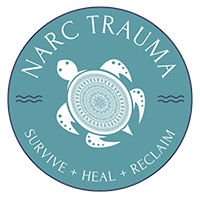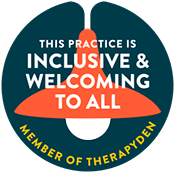What Is EMDR Therapy?

By Brenda Stephens, Licensed Professional Clinical Counselor
What is EMDR Therapy?
Eye Movement Desensitization and Reprocessing (EMDR) Therapy is a unique approach to mental health treatment, especially for those struggling with trauma. This blog will explore the essential aspects of EMDR, how it works, and who can benefit from it.
EMDR Therapy is a psychotherapy approach that helps individuals process and recover from traumatic memories.
At its core, EMDR aims to alleviate the distress associated with traumatic memories. It does this by using a structured approach to enable clients to confront and integrate their traumatic experiences.
The therapy focuses on changing the negative beliefs that arise from trauma. By addressing these core beliefs, individuals can gradually develop a more positive and adaptive view of themselves and their experiences.
During EMDR sessions, clients are guided by trained professionals who help facilitate the healing process. The relationship between the therapist and client is fundamental to creating a safe space where emotional work can take place.
In EMDR, clients do not have to go into detail about their trauma if they aren’t comfortable doing so. This feature makes it a great choice for those who might find talking about their history overwhelming.
Ultimately, EMDR Therapy offers a unique blend of cognitive and somatic techniques that together foster resilience. This therapy is not just about remembering; it’s about transforming the impact of those memories.
How Does EMDR Work?
The therapy involves a structured eight-phase approach, integrating bilateral stimulation, usually through eye movements, to help clients reprocess distressing memories.
In the first phase, history-taking occurs, where the therapist gathers information about the client’s past. This step is crucial as it lays the foundation for the targeted traumatic memories that will be processed.
Subsequent phases guide clients in identifying the specific distressing memories they want to target. The therapist assists in forming a positive belief to replace any negative thoughts associated with the trauma.
Bilateral stimulation can be achieved through various methods, including side-to-side eye movements, auditory tones, or tactile taps. Each method serves to engage the brain’s natural healing processes.
The process is systematic, and during sessions, clients will revisit memories with bilateral stimulation. This can help decrease vividness and emotional charge, effectively desensitizing them to these memories.
As clients work through their memories, they may notice a decrease in anxiety and an increase in a sense of control over their thoughts and feelings. This transformation is a significant milestone in the healing process.
Who Can Benefit from EMDR Therapy?
EMDR is particularly effective for individuals suffering from PTSD, but it can also assist those with anxiety, depression, and other emotional issues.
People who have experienced various traumas—whether acute or chronic—often find solace through EMDR. This therapy addresses both the individual’s present struggles and the roots of those challenges.
Moreover, EMDR is not limited to those with diagnosed mental health disorders. It can be beneficial for anyone looking to process difficult or distressing life events. This includes personal losses, accidents, or any significant life changes.
Children and adolescents can also go through EMDR Therapy, with adaptations made to suit their developmental stage. This flexibility makes it an inclusive option for many.
As individuals work through their traumas, they often report improvements not just in specific symptoms but in their overall well-being. EMDR can lead to greater emotional regulation and improved relationships.
Ultimately, anyone feeling stuck due to past events may find EMDR to be a transformative therapeutic choice.
What to Expect in an EMDR Session?
During an EMDR session, clients will discuss their traumatic experiences while participating in the bilateral stimulation process, allowing for emotional healing.
The first sessions are often focused on establishing a safe environment and understanding the individual’s history. This is essential to building trust and rapport between the client and therapist.
As therapy progresses, clients will begin to delve into their targeted memories, engaging in the structured processing that EMDR offers. The therapist will guide them through each step, ensuring they feel supported.
Clients may also learn various coping techniques throughout the sessions, which can be useful if strong emotional reactions arise during or after processing.
Many individuals find the experience enlightening and empowering, citing a greater awareness of their emotions and the triggers behind them. This newfound understanding is a critical aspect of healing.
While some clients may experience discomfort when revisiting memories, they often emerge feeling more resolved and at peace. The goal is always to move toward healing and integration.
Is EMDR Therapy Evidence-Based?
Numerous studies support EMDR’s effectiveness, and it is recognized by organizations like the American Psychological Association.
Research has shown that EMDR therapy not only significantly reduces PTSD symptoms but also helps improve emotional regulation and overall mental health. The therapeutic techniques used in EMDR align well with neuroscience principles, enhancing its credibility.
In clinical studies, EMDR has been shown to be as effective, if not more so, than traditional therapies such as cognitive behavioral therapy (CBT). This evidence has led to it being utilized in diverse settings, including hospitals and clinics worldwide.
Professional organizations endorse EMDR, and it is often included in treatment guidelines for trauma-focused therapy. Therapists commonly undergo specific training to ensure they can deliver this therapy effectively.
The growing body of research and positive testimonials from clients indicate that EMDR is not only a legitimate therapeutic approach but a powerful tool for those looking to reclaim their lives from trauma.
In Summary
EMDR Therapy offers a pathway to healing that has been proven to help many individuals overcome past traumas and emotional challenges. Its unique method and effectiveness make it a valuable option in the field of mental health treatment.







